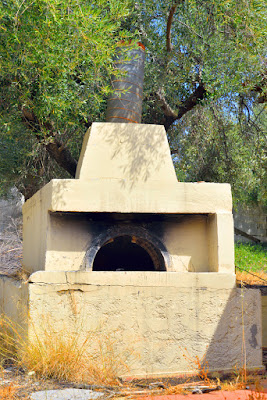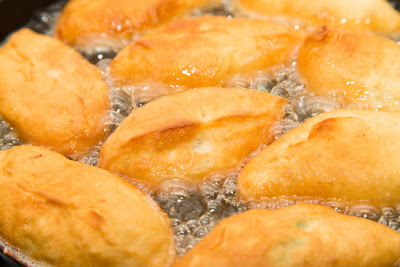Cleaning Your Commercial Fryer
It should come as no surprise to you that your fryers can get really dirty, really fast. Because of this, it’s important to include regular maintenance into your routine. This is for the benefit of maintenance, food quality, public health, and even kitchen safety. When working with fryers, you’re not playing with fire, but you basically are. Hot oil can cause serious burns if not properly used, and if your fryer isn’t clean, it’s easier for things to catch fire and cause bigger issues. There is some debate about how often a boil-out should be performed, but we’re going to give you some details and let you make up your own mind.
If the oil is hot, use the clean-out rod to remove the fryer basket, sediment tray or screen from the fryer. You’ll want to clean, rinse, and dry these items completely before the next use. After the oil has cooled completely, you’ll use a steel drum and filter cone to drain the oil - very carefully. You’ll now remove any debris and sediment, including the stuff that is blocking the drain.
Close the drain valve, and once the fryer is completely cooled down, wipe it with a clean cloth and warm water. Dry it completely, and now you’re ready for the next day!
Start by following the daily clean out steps, and then close the drain valve. Place a large pan underneath to catch the drained cleaning water after the boil-out. You’ll fill your fry tank 3 inches from the top or to the oil level line, with water and a special cleaning detergent. Some models use a caustic ingredient - never add this to boiling water! Other fryers may be cleaned well with a non-caustic detergent, so refer to your manual and use what they suggest. Turn the fryer on to boil using the temp setting suggested by the cleaning agent or your manual. Let it simmer or slow-boil for 20 minutes and do not let the water splash, splatter, or boil over.
Turn off the fryer and use a fryer brush to scrub the bottom, sides, and heating element very carefully. Drain the water slowly and carefully into the water drain pan after it has cooled. Rinse your fryer with water and vinegar, and then rinse again with water. If you used a caustic cleaner, check the ph of the final rinse water to make sure that you have removed all signs of the cleaner.
Finally, wipe down your fryer, dry the tank, and close the drain valve. Make sure all of the water is dried out before filling with oil for the next use.
Daily Cleaning Routine for Your Fryer
If you perform daily cleaning, you will find that other deep cleaning can be a little less frequent. Do you have to move your fryer to clean it? Start by disconnecting the power, and if it’s a gas fryer, close the gas supply inlet and turn off the pilot light. Always wait for any oil inside to cool completely before moving the unit!If the oil is hot, use the clean-out rod to remove the fryer basket, sediment tray or screen from the fryer. You’ll want to clean, rinse, and dry these items completely before the next use. After the oil has cooled completely, you’ll use a steel drum and filter cone to drain the oil - very carefully. You’ll now remove any debris and sediment, including the stuff that is blocking the drain.
Close the drain valve, and once the fryer is completely cooled down, wipe it with a clean cloth and warm water. Dry it completely, and now you’re ready for the next day!
Deep Clean Boil-Out
Some suggest doing this weekly while others suggest monthly. Refer to your users manual to learn the best routine, or make your decision based on how dirty your fryer gets. Even with daily cleaning, your fryer will start to get build-ups, so the boil out is used to help start fresh and get a clean surface.Start by following the daily clean out steps, and then close the drain valve. Place a large pan underneath to catch the drained cleaning water after the boil-out. You’ll fill your fry tank 3 inches from the top or to the oil level line, with water and a special cleaning detergent. Some models use a caustic ingredient - never add this to boiling water! Other fryers may be cleaned well with a non-caustic detergent, so refer to your manual and use what they suggest. Turn the fryer on to boil using the temp setting suggested by the cleaning agent or your manual. Let it simmer or slow-boil for 20 minutes and do not let the water splash, splatter, or boil over.
Turn off the fryer and use a fryer brush to scrub the bottom, sides, and heating element very carefully. Drain the water slowly and carefully into the water drain pan after it has cooled. Rinse your fryer with water and vinegar, and then rinse again with water. If you used a caustic cleaner, check the ph of the final rinse water to make sure that you have removed all signs of the cleaner.
Finally, wipe down your fryer, dry the tank, and close the drain valve. Make sure all of the water is dried out before filling with oil for the next use.
Fryer Maintenance in Missouri
No matter how often you clean your unit, sometimes maintenance is still required. At Fast Fix LLC, we provide an excellent service for your kitchen through our maintenance agreements. We can schedule preventative maintenance for your restaurant that includes even more than just the equipment. Visit our website to learn more about our restaurant services in Missouri, or give us a call. We provide 24/7 emergency services and look forward to repairing Missouri restaurant through all of our services.Fast Fix LLC. Restaurant Equipment Service & Repair -
One Call Does It All!
Fast Fix LLC. Restaurant Services
3362 State Road JJ
Kingdom City, MO 65262
Columbia: 573-544-0456
St. Louis: 636-327-8349
Website: www.FastFixLLC.com







Comments
Post a Comment